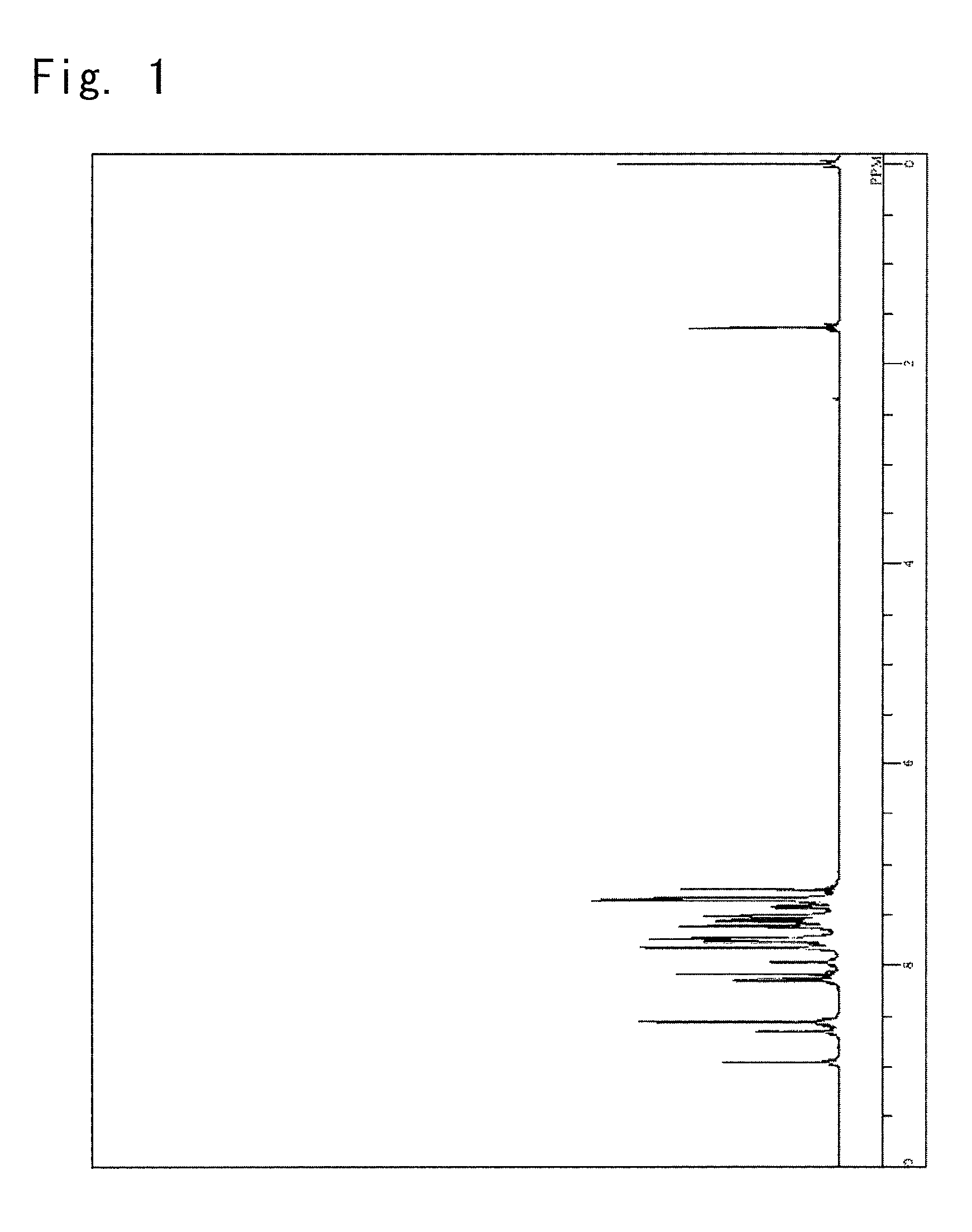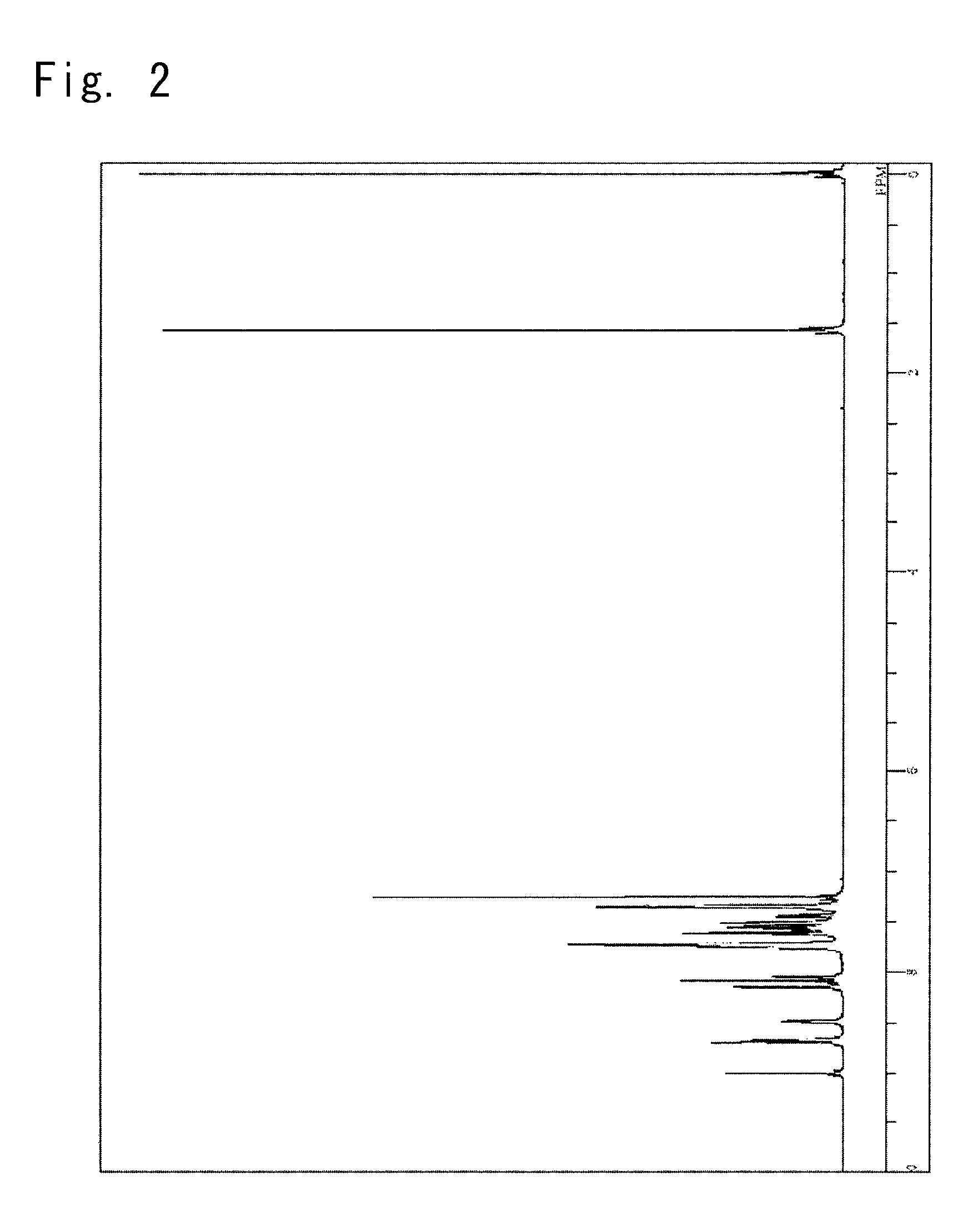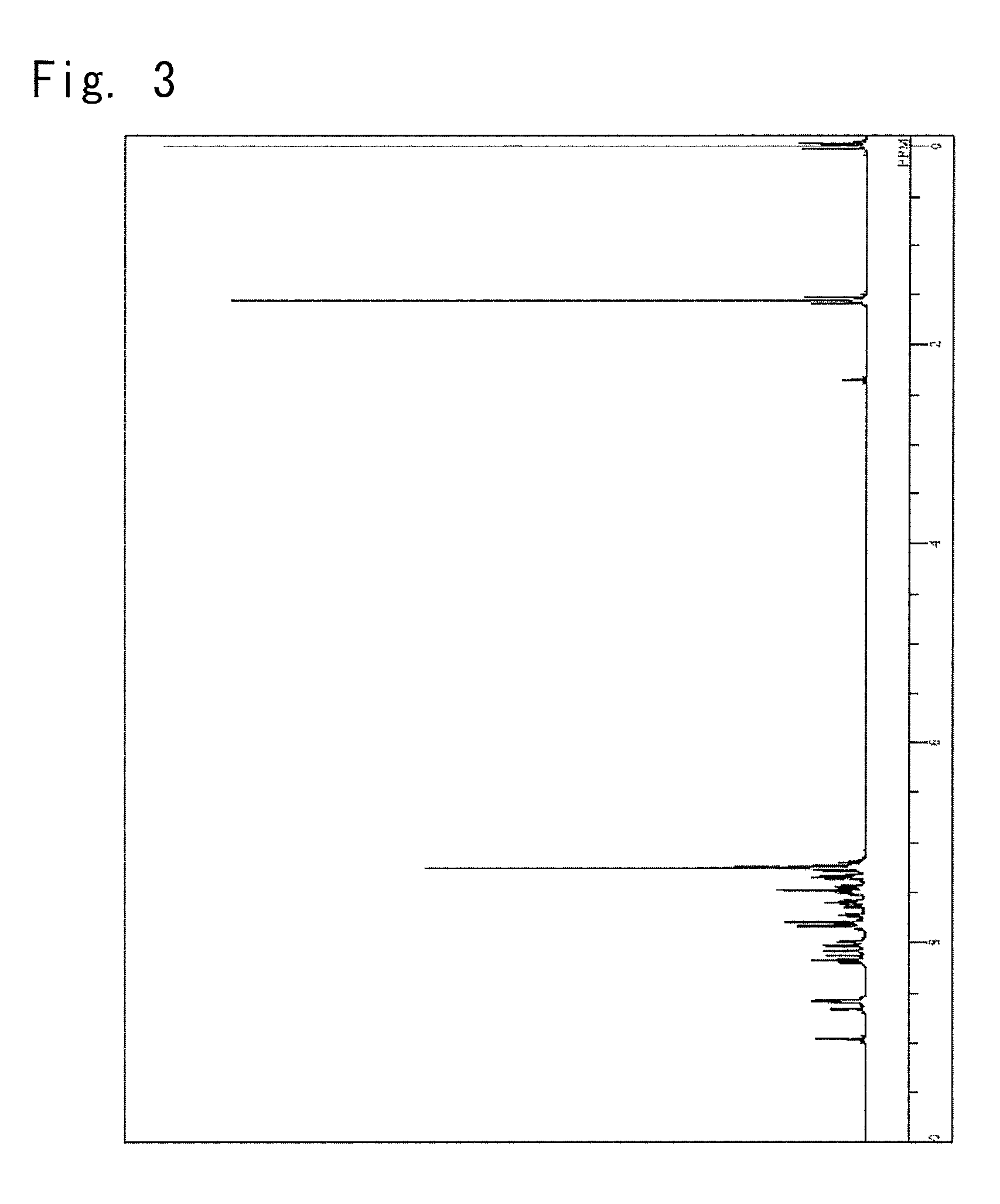Benzotriazole derivatives and organic electroluminescent devices using the derivatives
a technology of organic electroluminescent devices and benzotriazole, which is applied in the field of benzotriazole derivatives, can solve the problems of low bcp stability, low bcp stability, and low efficiency, and achieve high electron injection/migration rate, improved electron transport efficiency, and high luminous efficiency
- Summary
- Abstract
- Description
- Claims
- Application Information
AI Technical Summary
Benefits of technology
Problems solved by technology
Method used
Image
Examples
example 1
Synthesis of a 5-(10-phenyl-anthracen-9-yl)-2-{4-(pyridin-3-yl)phenyl}-2H-benzotriazole (Synthesis of a Compound 4)
[0146]
[0147]
1-Bromo-4-nitrobenzene50g,3-Pyridineboronic acid31.9g,2M Potassium carbonate aqueous solution309ml,Toluene200ml,Ethanol40ml, andTetrakistriphenylphosphine palladium (0)11.0g,
were put into a reaction vessel purged with nitrogen, and were heated and refluxed for 14 hours with stirring. The reaction solution was concentrated and the precipitated crystals were picked up by filtration. Through the dispersion washing with an isopropanol, there was obtained a grey powder of 3-(4-nitrophenyl)pyridine crystals in an amount of 43.5 g (yield, 88.80).
[0148]
The thus obtained 3-(4-nitrophenyl)pyridine3.5 g,4-Bromo-1,2-diaminobenzene3.6 g,Caustic soda1.4 g, andToluene 50 ml,
were put into the reaction vessel purged with nitrogen, and were heated and refluxed for 7 hours with stirring.
[0149]100 Milliliters of toluene was added thereto to extract the reaction solution which w...
example 2
Synthesis of a 5-(10-phenyl-anthracen-9-yl)-2-{3-(pyridin-4-yl)phenyl}-2H-benzotriazole (Synthesis of a Compound 5)
[0157]
[0158]A 5-bromo-2-{3-(pyridin-4-yl)phenyl}-2H-benzotriazole was synthesized from a 1-bromo-3-nitrobenzene and a pyridin-4-ylboronic acid in the same manner as in Example 1.
[0159]
The above 5-bromo-2-{3-(pyridin-4-yl)phenyl}-2.9 g,2H-benzotriazole9-Phenylanthracen-10-ylboronic acid2.6 g,2M Potassium carbonate aqueous solution 12 ml,Toluene 30 ml,Ethanol5.6 ml, and
[0160]Tetrakistriphenylphosphine palladium (0) 0.4 g, were put into the reaction vessel purged with nitrogen, and were heated and refluxed for 7.5 hours with stirring.
[0161]The organic layer was picked up by the separating operation, concentrated under a reduced pressure and was refined by the column chromatography to obtain 1.7 g of a yellow powder of 5-(10-phenyl-anthracen-9-yl)-2-{3-(pyridin-4-yl)phenyl}-2H-benzotriazole (compound 5) (yield, 38.7%).
[0162]The obtained yellow powder was identified for its ...
example 3
Synthesis of a 5-{10-naphthalen-1-yl)anthracen-9-yl}-2-{4-(pyridin-3-yl)phenyl}-2H-benzotriazole (Synthesis of a Compound 8)
[0165]
[0166]
The above 5-bromo-2-{4-(pyridin-3-yl)phenyl}-4.0 g,2H-benzotriazole synthesized in Example 110-(Naphthalen-1-yl)anthracen-9-ylboronic acid4.8 g,2M Potassium carbonate aqueous solution 17 ml,Toluene 28 ml, andEthanol 7 ml,
were put into the reaction vessel purged with nitrogen, and through which the nitrogen gas was flown for 60 minutes with stirring.
[0167]Next, 0.7 g of the tetrakistriphenylphosphine palladium (0) was added thereto, and the mixture was heated and refluxed for 10.5 hours with stirring. The organic layer was picked up by the separating operation, concentrated under a reduced pressure and was refined by the column chromatography to obtain 3.5 g of a yellow powder of 5-{10-(naphthalen-1-yl)anthracen-9-yl)-2-{4-(pyridin-3-yl)phenyl}-2H-benzotriazole (compound 8) (yield, 53.5%).
[0168]The obtained yellow powder was identified for its struc...
PUM
| Property | Measurement | Unit |
|---|---|---|
| voltage | aaaaa | aaaaa |
| brightness | aaaaa | aaaaa |
| work function | aaaaa | aaaaa |
Abstract
Description
Claims
Application Information
 Login to View More
Login to View More - R&D
- Intellectual Property
- Life Sciences
- Materials
- Tech Scout
- Unparalleled Data Quality
- Higher Quality Content
- 60% Fewer Hallucinations
Browse by: Latest US Patents, China's latest patents, Technical Efficacy Thesaurus, Application Domain, Technology Topic, Popular Technical Reports.
© 2025 PatSnap. All rights reserved.Legal|Privacy policy|Modern Slavery Act Transparency Statement|Sitemap|About US| Contact US: help@patsnap.com



